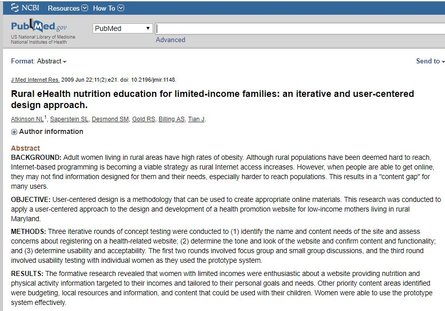
Abstract
BACKGROUND:
Adult women living in rural areas have high rates of obesity. Although rural populations have been deemed hard to reach, Internet-based programming is becoming a viable strategy as rural Internet access increases. However, when people are able to get online, they may not find information designed for them and their needs, especially harder to reach populations. This results in a "content gap" for many users.
OBJECTIVE:
User-centered design is a methodology that can be used to create appropriate online materials. This research was conducted to apply a user-centered approach to the design and development of a health promotion website for low-income mothers living in rural Maryland.